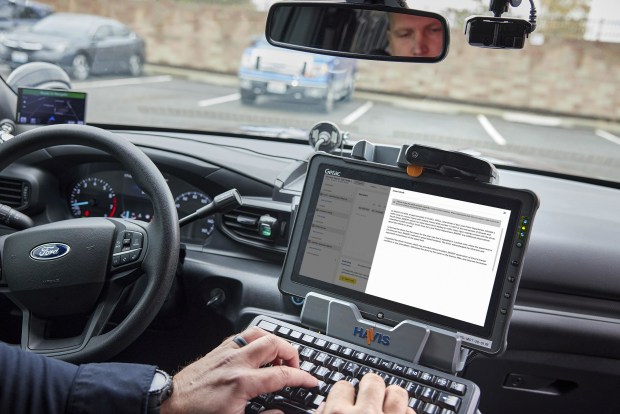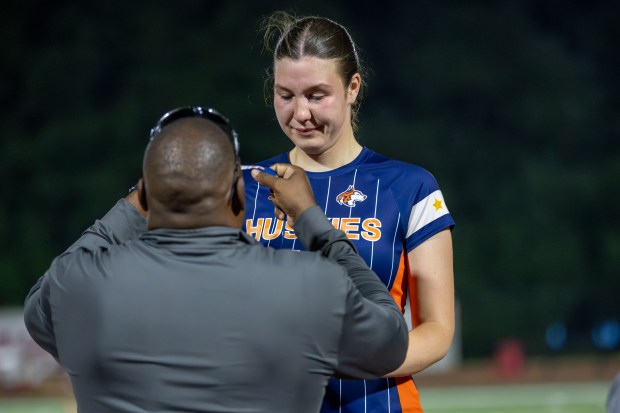When she first started writing reports as a rookie police officer more than 25 years ago, the protocol was to do them by hand using carbon paper, Elgin Police Chief Ana Lalley said.
Michael Bayard, the Elgin Police Department’s system technology supervisor, remembers those days and what a tough transition it was when they switched to computers, he said. Veterans in particular were resistant to the change, and in general police officers and technology mix about as well as oil and water, he said.
But change is coming and just like with computers, Elgin’s police officers are going to have to adjust to using AI — artificial intelligence technology — to generate their reports, they said.
Pending Elgin City Council approval, the department plans to include the $159,000 application purchase of Draft One in its 2025 budget and to begin using it early next year. It’s produced by Axon, the same company that manufactures the police department’s body-worn cameras.
Draft One adds software to an officer’s body camera to record audio and create a transcript that becomes the basis of their incident report, said Public Safety System Specialist Joseph Alderson, who brought the idea to Lalley after attending an April conference at which Draft One was introduced.
Elgin police were one of “the early adopters of body-worn cameras, and so this is the next evolution,” Lalley said.
“We pride ourselves on being progressive,” she said. “We’re not afraid to be the first. A lot of departments are afraid to be the first because they get criticized. We don’t fear that.”
Draft One is like a high-level template for police reports, said Alderson, who has created a video demonstrating how the technology works. Using a fictional traffic stop, the video shows how AI took an audio recording of the entire interaction and, within three to five minutes, created a transcript.
Officers receive a copy of that transcription to read, enhance and correct, Alderson said. Any information that’s left blank means the officer hasn’t completed the report. A box at the end requires the officer to attest to its accuracy, indicating it’s sworn testimony, he said.
Unlike other AI programs, Axon’s doesn’t allow for commentary or summaries.
“It’s not seeing things and trying to interpret. It’s listening to things,” Alderson said. “(It can’t) draw a conclusion based on what’s being said or heard.”
Fourteen Elgin police officers tested the software and gave their feedback, Lalley said. In general, it reduced the time spent writing reports by 50% and officers were back on the street more quickly, she said.
Another perk is the reports have no grammatical errors that need to be corrected, Alderson said.
As of right now, Elgin’s is the only police department in Illinois planning to switch to the application, which Axon launched in April.
Bayard said police in Lafayette, Indiana, were in Axon’s test group. The officials there told him it was easy deploy, and officers gave it rave reviews too, he said.
“They said if they had to take it back, they would probably face a revolt from the officers,” Bayard said.
The only time Draft One is not effective is when an officer is dealing with a large crowd or a chaotic scene, he said. In that situation, officers can use the software for dictation purposes instead.
Lalley said she knows there will be a learning curve for the public, who might find the use of AI unsettling. It’s hoped that by providing information and education in advance of their use, some of those concerns and fears will be alleviated, she said.
“AI, especially in law enforcement, is something relatively new. It’s something people are adapting to,” she said. “With AI, it’s important for us to be mindful of the unintentional consequences.”
That said, the technology stands to revolutionize police work, Bayard said.
“It’s awe-inspiring,” he said. “We love the challenge and knowing people are looking at us to lead the way.”
Gloria Casas is a freelance reporter for The Courier-News.





